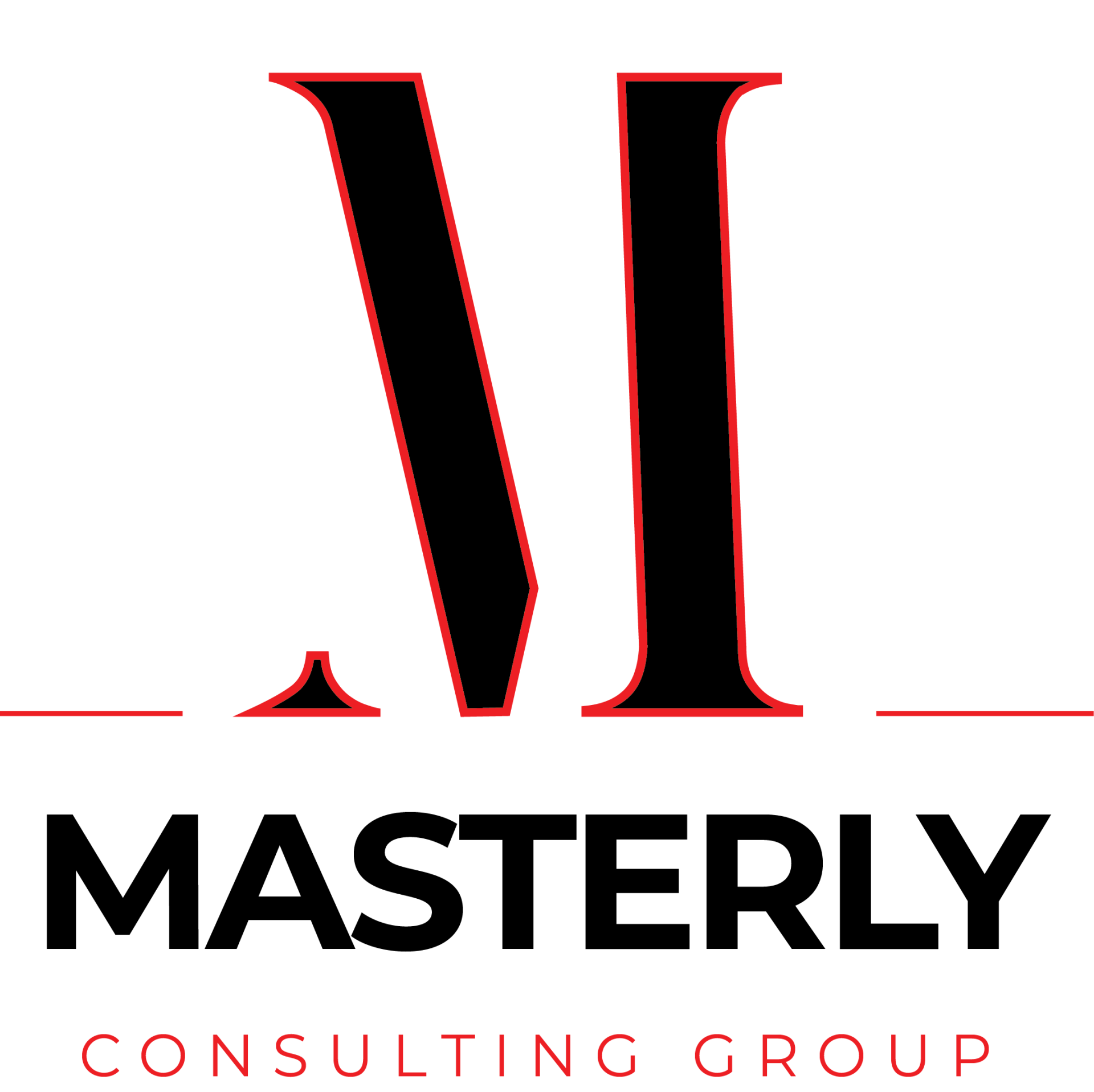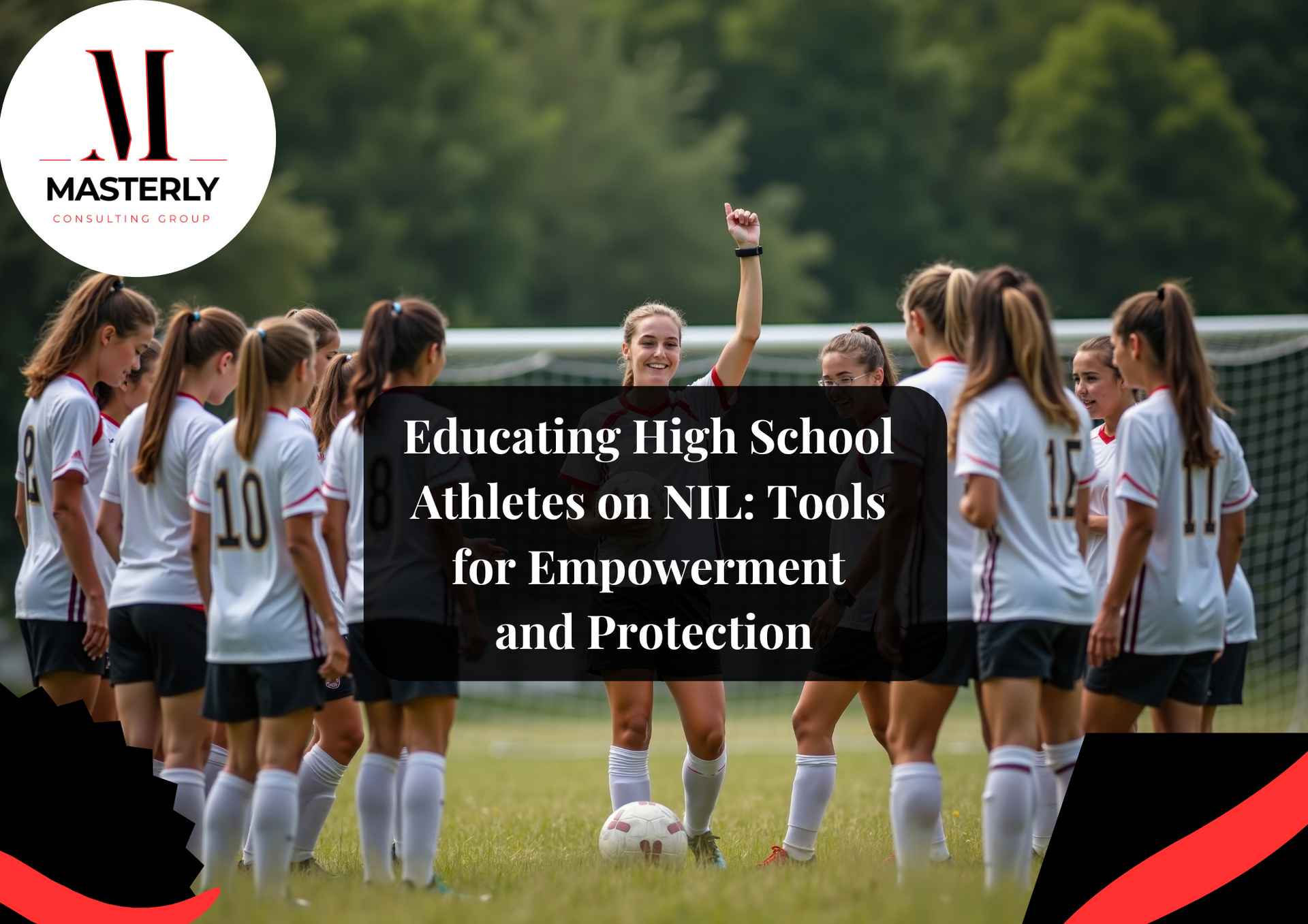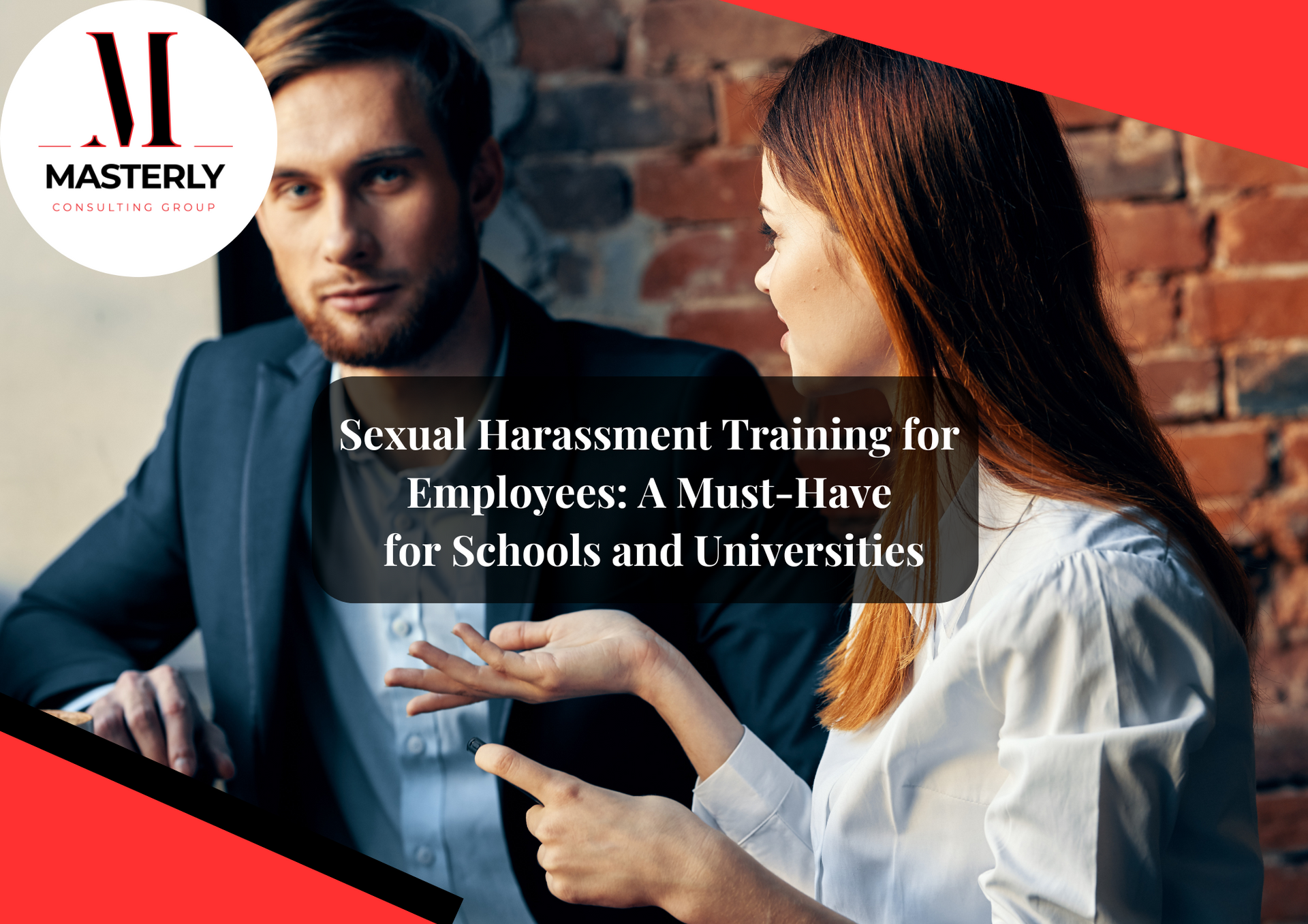Differences Between Employee Handbooks for K-12 Schools and Higher Education
Creating an employee handbook for an educational institution requires a deep understanding of federal and state regulations, compliance standards, and specific workplace expectations. However, the structure and content of employee handbooks differ significantly between K-12 schools and higher education institutions. Each type of institution faces unique legal requirements, employment law considerations, and workplace policies that must be clearly outlined in their handbook.
At Masterly Consulting Group, we specialize in employee handbook services designed to ensure schools and universities remain compliant while maintaining clarity in their employment policies. This article will explore the differences between employee handbooks for K-12 schools and higher education, providing valuable insights to help administrators develop a custom employee handbook that meets the needs of their institution.
Key Differences in Employee Handbooks for K-12 and Higher Education
1. Legal Compliance and Federal Regulations
All educational institutions must comply with federal regulations, but the requirements for K-12 schools and higher education differ significantly.
- K-12 Schools: Must follow state and federal education laws, such as the Every Student Succeeds Act (ESSA) and Individuals with Disabilities Education Act (IDEA), which impact policies for teachers and staff.
- Higher Education Institutions: Must adhere to additional laws like the Clery Act, Title IX, and FERPA, which affect workplace conduct, faculty-student relationships, and reporting obligations.
A custom employee handbook must include federal and state compliance requirements that are relevant to the specific type of institution.
2. Differences in Company Policies and Employment Law Considerations
Both K-12 schools and universities must establish clear company policies, but the scope varies based on institutional structure.
- K-12 Schools must outline policies on teacher evaluations, student supervision, and mandatory reporting of abuse or neglect under state laws.
- Higher Education Institutions require policies on academic freedom, faculty tenure, and research misconduct that are not typically included in K-12 handbooks.
Ensuring policies are aligned with federal and state employment laws helps stay compliant and avoid unnecessary risk.
3. Employee Benefits and Compensation Policies
A well-structured employee handbook must provide a clear and concise explanation of employee benefits for teachers, faculty, and staff.
- K-12 Schools: Often follow structured salary scales based on state and federal funding, with uniform benefits like retirement plans and health insurance.
- Higher Education Institutions: Faculty members may have tenure-track positions, performance-based raises, and additional research funding, requiring a more complex benefits structure.
Outlining custom policies related to compensation, paid leave, and company culture ensures employees understand their rights and benefits.
4. Workplace Policies and HR Best Practices
HR best practices differ based on the type of educational environment.
- K-12 Handbooks focus on student interaction policies, disciplinary procedures, and mandatory training for classroom management.
- Higher Education Handbooks cover faculty governance, research ethics, and intellectual property rights for professors.
A custom employee handbook ensures that these workplace policies are clearly defined to prevent conflicts and maintain compliance.
5. Printing, Distribution, and Employee Manual Access
Handbooks should be easily accessible to all employees in a printer-friendly format or through a digital platform.
- K-12 Schools often require hard copies for faculty and support staff who may not have daily access to digital platforms.
- Higher Education Institutions typically use professional printing services or online portals, integrating handbook builder tools for easy updates.
Providing printer-friendly access and customizable fields allows institutions to adapt their employee manuals to specific needs.
6. Customization and Handbook Services for Schools and Universities
A custom employee handbook should reflect the unique needs of each institution while ensuring compliance with federal and state regulations.
- K-12 Schools may use pre-populated staff policies and state-specific filters to align with local requirements.
- Higher Education Institutions require custom policies related to faculty research, grant funding, and multiple states compliance for institutions with satellite campuses.
Using an employee handbook builder can streamline this process, reducing extra costs and ensuring all policies are up-to-date.
7. Employee Handbook Review and Updates
Both K-12 schools and higher education institutions must conduct employee handbook reviews regularly to ensure legal compliance with federal and state laws.
- K-12 Schools: Handbooks are typically reviewed annually, with updates based on state regulations and union agreements.
- Higher Education Institutions: Require ongoing legal expertise to address changing federal and state employment laws, tenure policies, and faculty contracts.
Institutions should work with legal experts to perform routine reviews and implement necessary revisions.

Ensuring a Compliant Employee Handbook for K-12 Schools and Higher Education
A properly structured compliant employee handbook is essential for educational institutions to meet state and federal regulations while maintaining operational efficiency. Both K-12 schools and higher education institutions must align their policies with federal law and federal policies, ensuring that their handbooks provide critical information on workplace expectations, employee conduct, and compliance requirements.
While K-12 schools typically follow state-specific policies related to teacher tenure and student interactions, universities must also adhere to city-specific policies governing research ethics, faculty governance, and academic freedom. Schools and universities should conduct an employee handbook review regularly to incorporate the latest federal and state regulations, reducing printing costs and ensuring updates are seamlessly integrated.
Additionally, institutions using an existing handbook should evaluate whether their policies are aligned with current employment laws and HR best practices. A handbook also serves as an important tool in reducing liability, reinforcing workplace culture, and improving administrative efficiency. Partnering with HR experts ensures your handbook remains legally compliant and reflects best practices in education.
For institutions requiring ongoing compliance updates, opting for an HR solutions provider offering a one-year subscription or renewal notice service can ensure your policies remain up to date. Whether you’re a school district administrator, college HR director, or SHRM member, maintaining a well-structured organization with an effective handbook is essential for both legal protection and employee clarity.
How a Well-Structured Employee Handbook Supports Organization in K-12 and Higher Education
A properly developed employee handbook plays a crucial role in maintaining organization within both K-12 schools and higher education institutions. These institutions have complex structures, with various departments, faculty levels, and administrative roles that require clear policies and procedures. A well-organized handbook ensures that all employees understand their responsibilities, workplace expectations, and compliance requirements.
In K-12 schools, an employee handbook serves as a reference guide for teachers, administrators, and support staff, outlining state-specific policies, disciplinary procedures, and student safety protocols. In contrast, higher education institutions require policies that address faculty tenure, research ethics, and academic governance, ensuring that all policies are aligned with state and federal regulations.
By implementing a structured and compliant employee handbook, educational institutions can foster consistency, streamline communication, and create a professional environment where policies are clear and easy to follow. Regular employee handbook review and updates also help institutions maintain compliance with federal law, city-specific policies, and evolving HR best practices.
Meeting Legal Requirements in Employee Handbooks for K-12 and Higher Education
A well-structured employee handbook must clearly outline the legal requirements that apply to both K-12 schools and higher education institutions. These requirements vary based on factors such as federal law, state and federal regulations, and local policies that govern employment practices in educational settings.
For K-12 schools, legal guidelines often include state-specific policies on teacher contracts, student discipline procedures, and federal policies related to child protection laws, such as mandatory reporting. Higher education institutions, on the other hand, must comply with additional legal requirements, including federal and state compliance with Title IX, research misconduct regulations, and faculty tenure policies.
To ensure compliance, institutions should conduct an employee handbook review regularly, integrating updates to reflect the latest federal and state regulations. A legally compliant employee handbook not only reduces risk but also ensures that all workplace policies align with employment laws, creating a well-structured and legally sound environment for faculty, staff, and administrators.

How Employee Handbooks Strengthen Business Operations and Current HR Practices in Education
A well-crafted employee handbook is more than just a compliance tool—it’s a critical asset for improving business operations and current HR processes in K-12 schools and higher education institutions. Educational entities function as complex organizations, requiring structured policies that align with federal law, state and federal regulations, and institutional goals.
For K-12 schools, an employee handbook helps administrators manage teacher contracts, disciplinary procedures, and professional development, ensuring that all business practices run smoothly. In higher education, handbooks must address faculty tenure, research policies, and staff governance, integrating HR best practices tailored to universities.
By regularly conducting an employee handbook review, educational institutions can ensure that their policies remain up to date with current HR standards, providing clear guidance for employees while minimizing legal risks. Investing in custom employee handbook services allows institutions to refine their policies, support compliance efforts, and maintain operational efficiency across multiple departments.
Contact Us for a Free Consultation
At Masterly Consulting Group, we understand the complexities of developing an effective employee handbook for educational institutions. Whether you need a custom employee handbook for a K-12 school or a higher education institution, our handbook services will ensure compliance with federal and state employment laws while addressing the unique needs of your employees.
Contact us at (888) 209-4055 to book a free consultation and learn how our employee handbook services can help your institution stay compliant, reduce unnecessary risk, and provide clear expectations for your faculty and staff.


Masterly Consulting Group
Office Number
(888) 209-4055
Office Locations
Dallas, TX | Uptown Area
Houston, TX | Galleria Area
Grand Prairie | Training Center
West Palm Beach, FL | Downtown
Coming Soon
Atlanta, GA
Latest news






